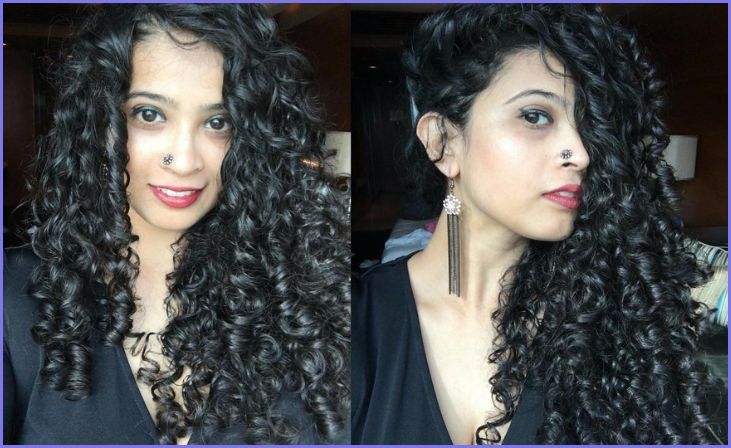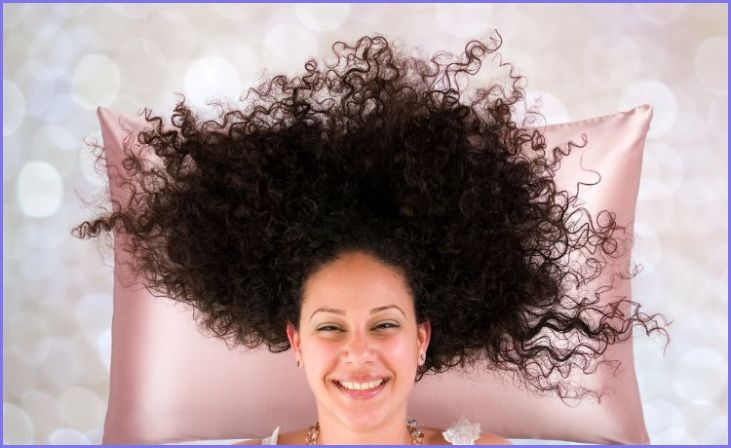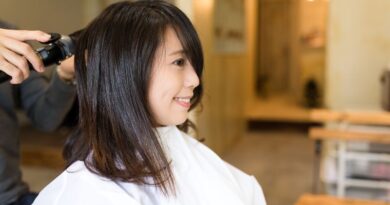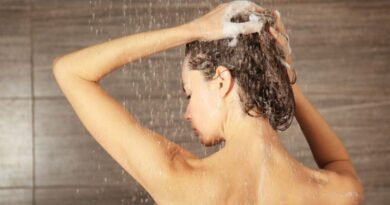Embarking on a journey to maintain healthy and beautiful curls requires more than just the right products. It’s a celebration of your unique hair texture and an exploration of the care it deserves. In this guide, we unveil the best 9 tips that go beyond the ordinary, offering a holistic approach to curl care. From nourishing routines to protective styling, these tips cater to the diverse needs of curly hair.
Get ready to embrace a curl-centric lifestyle that not only enhances the natural beauty of your curls but also promotes their health and vitality. Say goodbye to frizz and hello to a world where your curls thrive with radiance and confidence. Let’s dive into the secrets that will transform your curl care routine into a journey of self-love and empowerment.
Tips to Keep Your Curls Healthy
Discover essential tips to maintain the health of your curls. From moisture retention to protective styling, elevate your curl care routine for vibrant, beautiful locks.
Hydration is Key
In the realm of curly hair care, the phrase “hydration is key” stands as an unwavering truth. Curly hair tends to be more prone to dryness due to its structure, which allows natural oils to travel less easily down the hair shaft. Therefore, maintaining optimal moisture levels is crucial for the health and vibrancy of curls. Incorporating a hydrating shampoo and conditioner specifically formulated for curly hair helps lock in moisture, preventing frizz and promoting defined curls.
Additionally, regular deep conditioning treatments provide an extra layer of nourishment, restoring moisture balance and enhancing the overall manageability of curls. Hydration not only keeps curls looking luscious and well-defined but also strengthens the hair, reducing the risk of breakage and promoting a resilient, healthy mane.
Also Read- 11 Incredible Ways to Get Wavy Hair At Home.
Gentle Cleansing
Gentle cleansing is a cornerstone of effective curly hair care. Unlike straight hair, curls often have a more porous structure, making them susceptible to moisture loss and environmental factors. Utilizing a sulfate-free, gentle cleanser ensures that curls are cleansed without stripping away their natural oils, which are essential for maintaining hydration and overall health.
This approach prevents dryness, frizz, and breakage, fostering an environment where curls can thrive. Incorporating a gentle cleansing routine, ideally washing curly hair no more than twice a week, helps retain the hair’s natural oils while keeping it clean and refreshed. This mindful cleansing approach contributes to the longevity and vibrancy of curls, allowing their natural beauty to shine through while minimizing the risk of damage and maintaining optimal curl health.
Deep Conditioning

Deep conditioning is a crucial step in the care routine for curly hair, offering a powerful boost of moisture and nourishment. Curly hair tends to be more prone to dryness due to its unique structure, and regular deep conditioning treatments play a key role in addressing this issue. Deep conditioners are formulated with rich, hydrating ingredients that penetrate the hair shaft, replenishing lost moisture and fortifying the hair from within.
This process not only enhances the curl pattern but also reduces frizz, promotes elasticity, and minimizes breakage. For optimal results, incorporate deep conditioning into your routine at least once a week, allowing the product to sit for the recommended duration. This luxurious treatment is a rejuvenating experience for curls, leaving them soft, defined, and radiantly healthy.
Detangle with Care
Detangling with care is a vital practice for maintaining the health and appearance of curly hair. The unique structure of curls can lead to tangles and knots, and forcefully combing through them may result in breakage. To detangle with care, start by applying a leave-in conditioner or a detangling spray to add slip and reduce friction. Use a wide-tooth comb or your fingers to gently work through knots, starting from the tips and gradually moving towards the roots. Divide your hair into sections to make the process more manageable.
This gentle approach minimizes stress on the hair strands, preventing breakage and preserving the natural curl pattern. Detangling with care is not just about maintaining the integrity of your curls but also about creating a positive and enjoyable experience in your hair care routine.
Avoid Heat Styling
Avoiding heat styling is a prudent strategy for maintaining the health and integrity of curly hair. Excessive use of heat styling tools, such as flat irons or curling wands, can lead to dryness, breakage, and a loss of curl definition. Curly hair tends to be more susceptible to damage, and the high temperatures from styling tools can strip away natural moisture, causing frizz and compromising the curl pattern.
Embracing heat-free styling methods, such as braiding or twisting, allows curls to flourish without the risk of heat-induced harm. If heat styling is necessary, always use a heat protectant spray to minimize damage. By incorporating a heat-free approach into your styling routine, you contribute to the long-term health and vibrancy of your curls, ensuring they remain beautifully defined and resilient.
Plop and Scrunch

“Plop and scrunch” is a popular technique in the curly hair community, renowned for enhancing natural curl definition and minimizing frizz. After applying styling products, gently plop your hair onto a microfiber towel or cotton T-shirt, allowing the fabric to absorb excess water without disrupting the curl pattern. This plopping method helps curls set in their natural shape.
Following the plop, use your hands to scrunch the hair upwards towards the roots. This scrunching action encourages the curls to form and defines their shape. The combination of plopping and scrunching is a dynamic duo in the curly hair care routine, providing a simple yet effective way to achieve beautifully defined, bouncy curls without the need for excessive manipulation or heat styling.
Product Selection
Choosing the right products is a crucial aspect of curly hair care that significantly influences the health and appearance of your curls. Opt for products specifically formulated for curly hair, including sulfate-free shampoos, moisturizing conditioners, and styling products designed to enhance curls. Look for ingredients like shea butter, argan oil, and glycerin, which provide hydration and promote curl definition. Avoid products containing harsh sulfates and silicones, as these can strip natural oils and create build-up. Experiment with different brands and formulations to find what works best for your unique curl pattern.
Additionally, consider your hair’s porosity and density when selecting products, as these factors influence how your curls absorb and retain moisture. By thoughtfully choosing products that cater to your hair’s specific needs, you contribute to a healthier, more vibrant curl journey.
Silk or Satin Pillowcases

Opting for silk or satin pillowcases is a game-changer in curly hair care. Unlike cotton, these smooth materials reduce friction, preventing tangles, breakage, and unwanted frizz. Curly hair is prone to dryness, and the gentle surface of silk or satin helps retain natural oils, keeping your curls moisturized. Additionally, the lack of absorbency in these materials ensures that your hair maintains its moisture balance throughout the night.
This choice not only promotes healthy, hydrated curls but also contributes to the preservation of your curl pattern. Investing in silk or satin pillowcases is a simple yet effective way to transform your nighttime routine, waking up with beautifully defined curls and minimizing the impact of friction on your hair health.
For More- Is It Bad To Wear Your Hair In A Bun Every Day?
Regular Trims
Regular trims are a cornerstone of maintaining healthy and beautiful curls. Curly hair is more prone to split ends and breakage, and routine trims help prevent these issues by removing damaged or weakened ends. Trimming every 8-12 weeks, or as needed, ensures that your curls remain resilient and vibrant. It also aids in maintaining a well-defined curl pattern, as removing damaged ends encourages healthier growth.
Regular trims are particularly crucial for individuals aiming to grow their curls, as they prevent split ends from traveling up the hair shaft, preserving length. Embracing regular trims as part of your curly hair care routine not only enhances the overall appearance of your curls but also contributes to their long-term health and vitality.
Conclusion
In the pursuit of maintaining healthy and beautiful curls, these nine tips serve as a comprehensive guide for curly hair care. From prioritizing hydration and gentle cleansing to embracing protective styles and avoiding heat styling, these practices contribute to the vibrancy and resilience of your unique curl pattern. Regular trims and thoughtful product selection further enhance the health of your curls, ensuring they remain luscious and well-defined. By incorporating these tips into your routine, you embark on a journey of self-love and empowerment, celebrating the natural beauty of your curls.
FAQs
Aim for at least once a week to provide your curls with essential moisture and nourishment.
It’s advisable to use sulfate-free, moisturizing shampoos designed for curly hair to prevent dryness.
Yes, this technique is versatile and effective for various curl patterns, enhancing definition and reducing frizz.
They reduce friction, preventing tangles and breakage, while also helping retain natural oils for moisturized curls.







